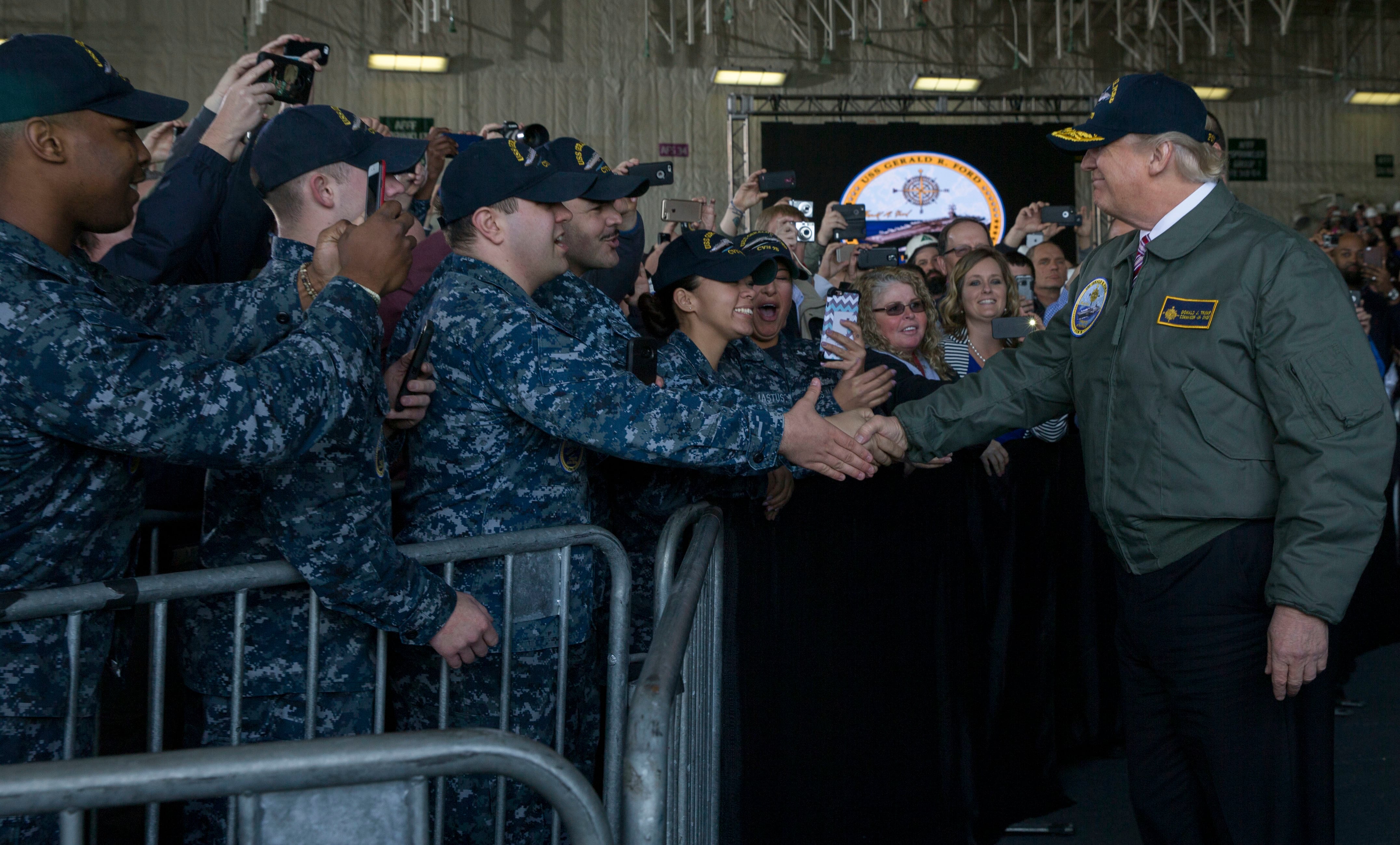This is Part I of a three-part commentary series.
U.S. President Donald Trump visited Newport News, Virginia, at the beginning of March to deliver a speech aboard the soon-to-be commissioned aircraft carrier Gerald R. Ford. It provided a timely reminder of his campaign pledge that he would increase the size of the fleet from the current figure of 272 to 350 ships over the next three decades. This is significantly more than the Obama-era plans to increase the fleet to 308 ships.
How this decision fits with any broader grand strategy is unclear. Critics have debated whether Trump has one. Indeed, a recent New York Times story suggested the growth of the military may simply be for the purpose of possessing raw military power rather than part of any serious strategizing.
Read Part II: The service's view
Read Part III: Military operations other than war
Trump's decision to focus on building a more powerful global Navy, however, fits with a longstanding American strategic tradition. It dates back to naval officer and historian Alfred Thayer Mahan's classic, "The Influence of Seapower on History," which was written on the cusp of America's emergence as a global power at the end of the 19th century. In Mahan's vision, a great Navy would promote America's commercial interests at home and abroad. It was, and for many still is, the foundation of any "grand strategy."
But a key question remains: Does Trump's specified goal of 350 ships meet the needs of the nation in the 21st century? How does this fit into a strategic vision for U.S. security?
Why 350 ships?
The new budget proposal reportedly calls for increasing the 2018 defense budget by $54 billion. This won't itself pay for an ambitious expansion of the Navy. The Ford alone costs about $13 billion. It will, therefore, take many years of spending to move building projects forward. But as the Trump administration's plans, if enacted, make clear, buying more ships will mean cuts to foreign aid, environmental protection and a series of regulatory agencies. These are choices that have been roundly criticized by former military officials and senior policymakers.
Moreover, there are few civilian officials available to answer the question of what purpose the Navy's growth serves. That is because there is currently a dearth of administrative appointments to key leadership positions in the Navy and the Department of Defense. So there is no evident strategy to justify this new target.
The man initially anointed by the Washington rumor mill as the next secretary of the Navy was ex-congressman Randy Forbes, formerly of the Subcommittee on Seapower and Projection Forces of the House Arms Services Committee and a vocal supporter of American naval power.
Forbes was passed over in favor of Phillip Bilden, a businessmen with ties to both the Army and the Navy. Bilden, however, withdrew from consideration when it became clear that ethics rules would require him to disentangle himself from his extensive business holdings. The vacuum remains unfilled. Now, in a strange turn of events, Forbes is once again in the running.
Meanwhile, the preferences of the new Secretary of Defense Gen. Mattis and national security adviser Gen. H. R. McMaster regarding the size, shape and purposes of the Navy are unknown.
Both are well-read, broadly educated, deep thinkers on U.S. and global security. But both participated in ground wars in the Middle East. They are therefore assumed to be advocates of land forces, not naval power. In the past, they have focused on conventional wars, counterterrorism and counterinsurgency, rather than maritime challenges.
In Part II, the Navy's view.
Simon Reich is a professor of global affairs and political science at Rutgers University. Peter Dombrowski is a professor of strategy at the Naval War College.





